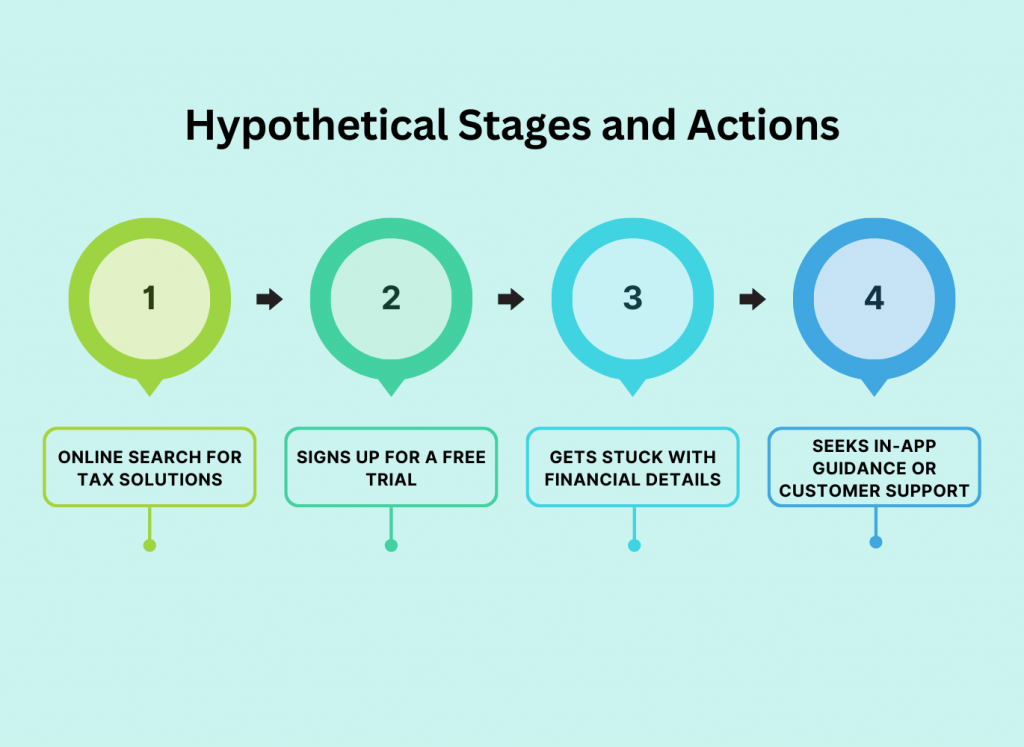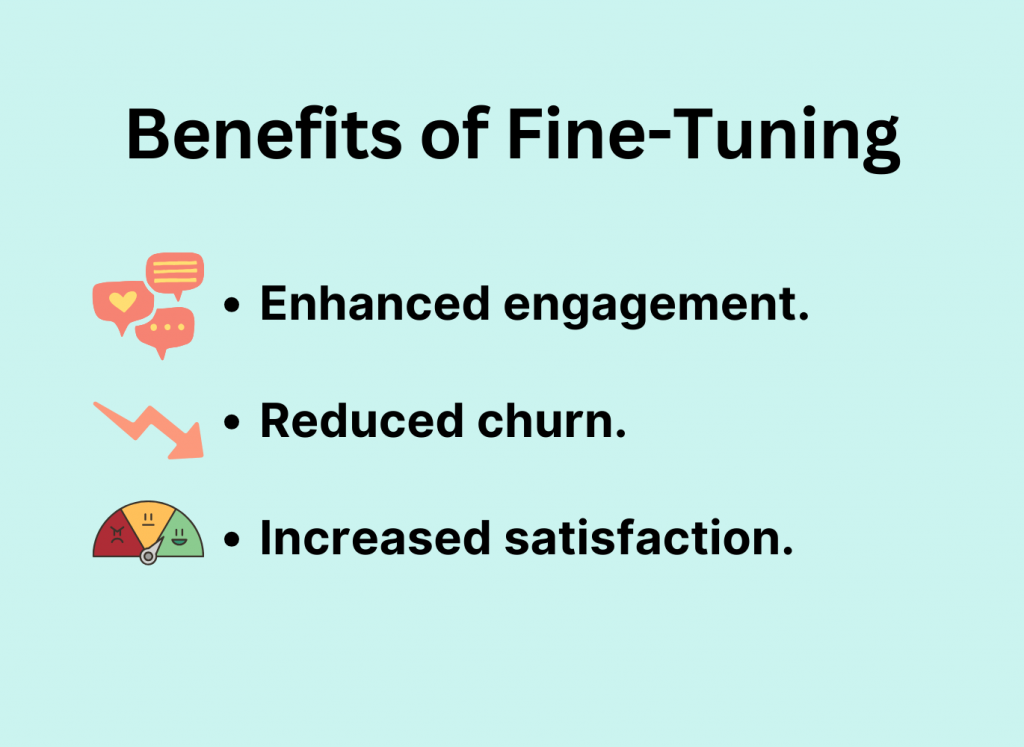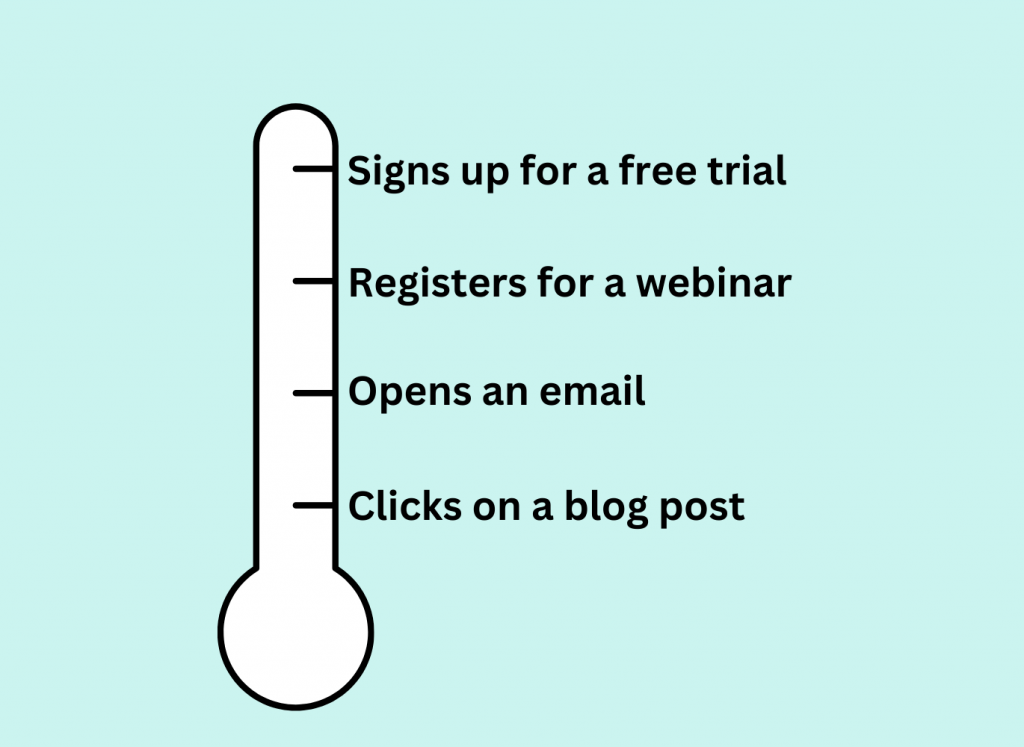You put your heart and soul into your product. You may even succeed in encouraging people to buy it. But what if they gradually churn out, not getting the full value of your SaaS software? One of the crucial aspects of gluing clients to your business is the customer experience.
Ideally, a person should receive impeccable service from the moment of seeing your offer and long beyond after purchasing it. But to provide such an experience, you need to understand the steps, roadblocks, and needs along this journey. You need to be proactive. You need to understand what to improve before that call from the unsatisfied user undermines your image.
How can you do that? That’s where customer journey mapping can save you from lots of headaches and having to deal with arising problems. In this article, we’ll cast light on the SaaS customer journey and how to plan it effectively.
Contents:
1. Understanding the importance of the SaaS customer journey
2. Setting the stage: SaaS customer fundamentals
3. Reimagining the SaaS customer journey stages
4. Navigating through the product experience
5. Fine-tuning customer touchpoints and milestones
6. Actionable steps to enhance the SaaS customer journey
7. SaaS customer journey metrics that actually matter
Understanding the importance of the SaaS customer journey
The customer journey isn’t as easy as it used to be. The more stiff the competition becomes, the more you and your prospects have to struggle with new products popping up left and right, attracting buyers’ attention.
As a result, it’s getting harder to get shoppers interested in your offer just by showing the maximum number of commercials. You need to guide people along a path. It’s like holding a baby’s hand to help them cross a busy road. You need to be that helpful and reliable adult.
But what if this busy road is your own company? Then, no one will map the SaaS customer journey better than you. So it’s your responsibility to help clients reach their destination—satisfaction with your product.
Below, you’ll find tips on drafting a journey map in relation to the various stages a typical customer goes through:
- awareness;
- consideration;
- purchase;
- usage;
- and finally, advocacy.
Real benefits for SaaS companies
Why is all the talk about SaaS customer journey mapping being the “next big thing”? Let’s drill down to what it actually delivers:
- Understanding the user mindset at each stage. For instance, what will they probably ask about during the onboarding process? What features could cause problems throughout the adoption stage?
- Applying knowledge to specific cases, such as proactively addressing issues, prioritizing feature development, thus reducing churn and enhancing the software.
- Pinpointing upselling or cross-selling opportunities. Suppose a person is active on your platform for several months and has engaged with advanced features. It can be an excellent opportunity to offer them to upgrade to a premium plan.
In the customer journey map, indicate points where user engagement is high or growing, where users are heavily utilizing advanced features, and how long the customer has been active. This is where you have their attention and interest the most. Conducting CRO audits can also provide valuable insights into optimizing these key touchpoints for better conversions.
Consider an example of a SaaS platform for email marketing. During research, you may find that customers know how to use basic email templates but struggle with analytics and A/B testing. Turn this insight into an advantage. You can improve the analytics feature by creating targeted tutorials or in-app tips that show up right when the user reaches the dedicated section.
Setting the stage: SaaS customer fundamentals
Setting the stage in the context of the SaaS customer journey revolves around getting crystal clear on who your customers are and what they actually want. You need to define your SaaS customer personas.
In the Internet economy, every click, like, and share counts. They hint at the customer desires, preferences, and interests, which you can apply to your product development. Let’s say you’re selling a SaaS solution for tax filing. Your customer persona isn’t just “people who need to file taxes”. It’s too broad a definition. You might need to consider small business owners, freelancers, or even large enterprises.
Here’s a quick tip: Make your customer personas detailed. Apart from the standard age, location, and income, include pain points, why they struggle with tax forms, and what features would make their lives easier.
Action steps
- Get qualitative data through customer interviews and surveys.
- Tap into the analytics dashboard to identify customer usage patterns.
- Combine this data to produce a minimum of 2-3 thorough consumer personas.
Realistic user scenarios to consider
Alright, so you’ve got your customer personas determined. The next step is to figure out the kinds of scenarios these people find themselves in. Say, you’ve got a small business owner named Sarah. She’s swamped with work and barely has time to sort through receipts, let alone figure out complicated tax forms. How can Sarah use your SaaS product to overcome this obstacle easily?
By outlining realistic user scenarios, you can anticipate the challenges users might face at different journey stages and tailor your product or service accordingly.
Example:

Sarah might start by searching online for “Easy tax filing solutions for small businesses”. That’s a cue for you to position your product in such search results or online communities where Sarah might spend time.
Maybe she signs up for a free trial but gets stuck when entering financial details. What kind of in-app guidance or customer support can you offer at this stage?
Action steps
- List down the common problems each of your customer personas faces.
- Map out typical actions or decisions they would take at each stage.
- Identify opportunities where your SaaS solution can swoop in and save the day.
Reimagining the SaaS customer journey stages
We’ve already mentioned the usual customer journey stages—Awareness, Consideration, Purchase, Retention, and Advocacy. But that’s where things get tricky. The modern SaaS customer doesn’t necessarily flow through these stages in this exact order. They may go backward, forward, or stop abruptly. So you’d better stay agile and rethink how you understand and build these journeys rather than stick to old playbooks.
Compare how a small business owner shopping for an accounting SaaS solution and a marketing exec looking for an email automation tool would behave. The former may be too focused on budget saving, ease of use, and basic accounting features. The latter might prioritize needs and specific capabilities to achieve business goals. The number of decision-makers and, ultimately, time to convert into a customer also varies. Here are some tips:
- Conduct user research. User interviews, analytics, and surveys can help.
- Analyze churn points where customers are dropping out of the journey.
- Compare your findings with your defined customer personas to spot patterns or new insights.
- Based on your data, adapt the stages of your SaaS customer journey. Create new stages if needed.
- Implement the new settings and keep an eye on KPIs to measure their impact.
Let’s say your user research reveals that a sizable portion of your clients stop using your service after the free trial has ended and don’t upgrade to a paid plan. What if you create an intermediate stage, something between “Trial” and “Paid Customer”? It can be an “Extended Trial” or “Freemium” model to let customers continue utilizing certain features for free.
After mapping out the SaaS customer journey and tailoring it to the target audience’s specific needs comes the actual product experience. That’s where all the next-level features should make sense for the customer. Take care of the following aspects.
Personalization
From awareness to onboarding, people expect special treatment. Whether it’s greeting customers by their name or tailoring the tool according to their needs, they’ll appreciate your attention to detail. For example, you can adapt a product’s interface by adding or removing features based on the subscription plan.
So, if you’re running an eсommerce SaaS platform, for instance, consider what capabilities different store owners would benefit more from. Say, an emerging entrepreneur would want step-by-step guidance on setting up their first product listing. A more seasoned retailer, in turn, might want to dive straight into advanced inventory management features.
Embedded user assistance
Your users will unlikely read a manual cover to cover. Your task is to provide timely and handy assistance, such as tooltips, pop-ups, or chatbots. Offer real-time guidance as users explore different features.
Micro-interactions for macro impact
The buyer journey consists of small steps users take to reach the final goal. And the experience in these stages can make a big difference. Whether people visit the pricing page, request a demo, or sign up for a free trial, make these actions smooth. One of the possible enhancements could be adding something as simple as a progress bar to show users how much they’ve achieved and what lies ahead. It can be especially encouraging for complex tasks.
Action steps
- Employ user testing. User testing is when you ask real users to test-drive the product before rolling out any new features.
- Leverage A/B testing. This term denotes launching two different versions of the user interface to see which one gets better engagement.
- Iterate. After conducting various research, don’t ignore user feedback. You should always be prepared to start over if something doesn’t work.
Fine-tuning customer touchpoints and milestones
Even with the right ingredients, you need to pay attention to little details to craft an amazing SaaS customer experience. These elements often manifest as touchpoints and milestones. Let’s see how to get them right.
Why generic touchpoints don’t cut it
Not all touchpoints are made equal. While designing typical touchpoints, such as signup pages, welcome emails, and onboarding sequences, is simple, depending only on these pre-made interactions won’t get you very far. Why? Because consumers are not homogeneous. Your SaaS product seeks to solve each customer’s individual needs and pain points.

This is where you need customer data to personalize and fine-tune touchpoints based on real user behavior. Users don’t necessarily drop off because the whole product is bad. Maybe it’s a particular feature that discourages them. Take it as a signal to reassess that touchpoint. Maybe an explainer video or a more intuitive UI can improve your metrics.
Action steps
- Segment your customer data to identify patterns or trends among different user groups.
- Customize touchpoints based on these findings.
- A/B test different variations to measure effectiveness.
Crafting milestones that matter
Touchpoints are specific interactions with your product, while milestones are broader achievements that customers reach during their journey. Milestones ought to have value for both you and the client.
Take a customer upgrading to a premium plan as an illustration. Instead of celebrating it from the company perspective, what about acknowledging when they’ve successfully used your service to accomplish a significant task for the first time? This makes the milestone much more important because it coincides with the customer’s recognition of value.
Tip: Make sure to mark these milestones on your journey map. This will help you re-evaluate the customer’s path, discovering the following information:
- what users value most;
- how you can better shape your future strategies;
- and ultimately, how to foster a more loyal and engaged customer base.
Steps to craft meaningful milestones
- Identify the critical processes or procedures that represent the customer’s value.
- Include these and your touchpoints in your journey map.
- Create strategies for recognizing or commemorating these achievements to encourage the customer’s positive behavior.
Actionable steps to enhance the SaaS customer journey
Now that you’ve got your journey map, identified milestones and touchpoints, let’s dig into some actionable steps to ramp up your SaaS customer journey.
Building a scoring model to quantify customer engagement
Building a scoring model is about assigning values to various customer behaviors and actions. The goal is to determine their level of engagement and readiness to buy. For instance, the more frequently users log in, utilize features, or favorably mention you on social media, the more points they get. The higher the score, the more engaged the prospect is. When they reach a certain score, your sales team can get a notification to step in with upsell suggestions.

What to do
- Identify key metrics: What behaviors are indicative of engagement in your SaaS product? Is it time spent on the platform, frequency of logins, or usage of specific features?
- Assign point values: Based on these metrics, allocate points that add up to provide an overall engagement score.
- Set triggers: Decide what actions to take when specific scores are reached. For example, low-scoring users can get automated emails with assistance offers.
- Review and tweak: This isn’t a “set and forget” model. Continuously analyze how scores align with customer retention and satisfaction and adjust accordingly.
Taking your own journey to remove friction
Nothing beats walking a mile in your customers’ shoes. Use your SaaS product as a real client to spotlight some not-so-obvious pain points or friction areas. Consider it as a loop for your own quality control.
Action steps
- Become the customer: Sign up for your service like a new user. Go through the onboarding, explore features, and try to accomplish specific tasks.
- Note down frictions: Keep track of what feels counterintuitive or overly complex.
- Bring in fresh eyes: Get team members who aren’t as familiar with the product to take the journey, too. They might pick up on issues you’ve glossed over.
- Iterate: Use these first-hand insights to refine the user experience. Maybe a tooltip needs rephrasing, or a button could be more prominently placed.
Empathize with your clients. Empathy is one of the most powerful tools for creating a customer journey that not only satisfies but delights.
SaaS customer journey metrics that actually matter
Your dashboard may beam with various metrics, charts, graphs, etc. Some of the figures are just good for boosting your self-esteem. Others can provide genuine insights for you to apply and get tangible results.
Metrics you shouldn’t ignore include the traditional parameters for measuring your strategies:
- Customer lifetime value (CLV): A cornerstone metric showing how much you could earn throughout a customer relationship. It helps in understanding your long-term return on investment (ROI).
- Repeat purchase rate (RPR): It demonstrates the proportion of customers returning to buy from your brand. Calculate it, especially if your SaaS has a freemium model or multiple levels of service.
- Customer retention rate: How many of your customers stay with you over a specific time period?
- Churn rate: How many customers do you lose over a certain time period?
- Net promoter score (NPS): How many of your users are going to be ambassadors for your brand and recommend it to others?
- Customer satisfaction: Ask users to evaluate their experience communicating with the company.
Moving beyond traditional metrics, look into the following figures:
- Feature utilization rate: What features are the most wanted and where you should allocate resources;
- Response and resolution times: How fast your customer support team resolves issues;
- Customer effort score (CES): How easy it is for your customers to interact with your product.
To sum up
Every organization, especially SaaS, can benefit from outlining a SaaS customer journey. As you can see the whole customer journey on your website, taking steps to improve it is a must. We’ve examined various stages, from understanding the unique profiles of your customer base to fine-tuning touchpoints and diving deep into metrics that truly matter. Now, it’s time to apply this knowledge and continue improving.
Gather data, adjust your approach, add and remove features. Keep the human element in mind. Be your most picky customer and iron out any wrinkles. And just remember: the perfect journey isn’t a destination—it’s an ongoing process.

%20(1).png)





